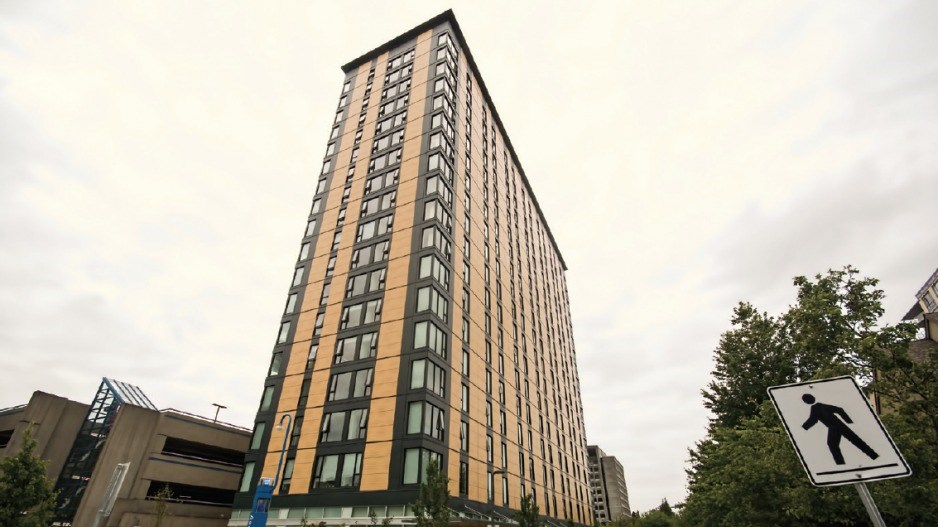Faced with the challenge of diminished lumber supply and lower prices, the British Columbia government has made investing in higher-value-added products like engineered wood a priority, betting that supporting mass timber construction can be a winning proposition for the industry.
"For too long the focus has been on maximizing volume but not value, and so we want to flip that on its ear," Doug Donaldson, minister of forests, lands, natural resource operations and rural development, told Business in Vancouver.
During 2019's first half, the B.C. government announced a number of measures aimed at supporting the increased production of engineered wood products for the construction industry, with a particular focus on building taller mass timber structures.
These initiatives include modifying the provincial building code to allow for construction of mass timber buildings reaching 12 storeys, up from six storeys, as well as requiring the use of engineered wood where possible in the construction of the new St. Paul's Hospital and the upgrade to the Royal British Columbia Museum.
Mass timber buildings, in which the primary load-bearing structures are made of solid or engineered wood, make for an attractive proposition for the lumber industry. Compared with dimensional lumber, engineered wood products can offer up to five times more value per linear foot, while remaining significantly less expensive and less carbon-intensive than other construction materials like concrete or steel.
According to a report by research firm Allied Market Research, the global engineered wood market is expected to reach a total value of US$41.27 billion by 2022, up significantly from 2016's US$10.93 billion value thanks to a 24.8% compound annual growth rate.
The minister of forests indicated that the government expects to see the market respond to this multi-pronged policy approach in the next few years, with producers and developers showing increased interest in mass timber construction.
"What we need to do is to work with industry, with investors, with First Nations communities, to ensure that the greatest-value product is coming out of the natural resources in our forests," Donaldson said.
The government's initiatives come in response to a challenging environment for the local forestry sector. Two devastating wildfire seasons and a mountain pine beetle infestation have significantly reduced the quantity of wood available, while factors like decreased demand from the United States and other trade headwinds have cut lumber prices by almost half over the past year.
"We have a dwindling fibre basket. We have less wood today than we did 20 years ago, so if we're going to continue to be a province that depends on forestry, which we will be, we need to make sure we are adding more value, not more volume, to our production," Premier John Horgan said in March during the announcement of the changes to the provincial building code.
So far the industry has welcomed the government's support measures, especially producers that had already ramped up investment in engineered wood manufacturing like Structurlam, a leading engineered wood products manufacturer that recently expanded its production facilities to accommodate increased demand.
"I'm a veteran in the wood products industry, and I can tell you that this mass timber revolution is something that I have never witnessed before," said Structurlam CEO Hardy Wentzel. "So I am very positive about the opportunities for mass timber to build faster, to build better quality and to build a cost-effective solution that will be very, very competitive."
Wentzel said the majority of the company's growing sales is going into "market-based development or developer-driven projects, which tells me that the economic proposition [of engineered wood products] is working."
Mass timber's potential has also attracted the attention of West Kootenays-based Kalesnikoff Lumber. Earlier this year, Kalesnikoff announced it planned to invest $35 million to build a new engineered wood manufacturing plant.
"We're growing our employment by 35% without harvesting a single extra tree, so that really encompasses the value-added steps that we're taking," said Chris Kalesnikoff, the company's COO. "Everybody has to move and adapt and embrace technology. For us, that was mass timber. For other companies it's cogeneration opportunities, it's renewable natural gas, it's biodiesel. There's other opportunities with the wood basket. But for us mass timber and this new technology was something that we've embraced and really feel it suits our manufacturing abilities."
Kalesnikoff also said continued communication and collaboration between the provincial government and industry participants remains a key factor.
"At the end of the day, I think we're all trying to best utilize the fibre basket that we're fortunate enough to have in British Columbia."



